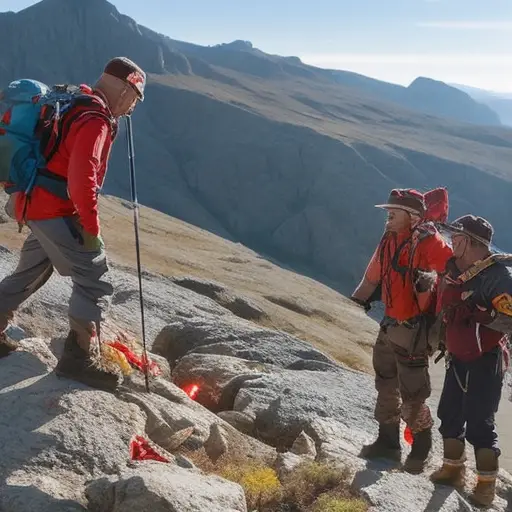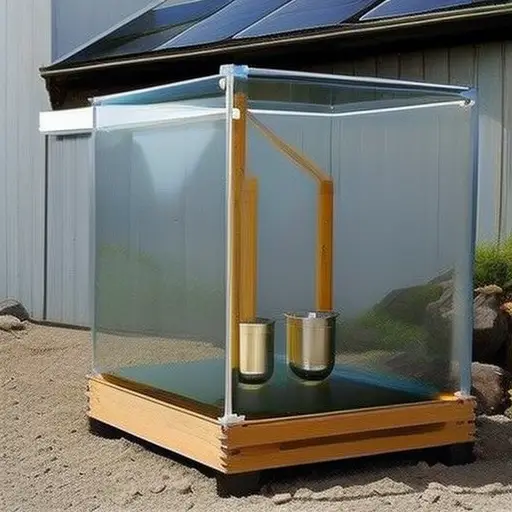Essential First Aid Skills for Wilderness Emergencies

In the untamed wilderness, where danger lurks around every corner, possessing essential first aid skills can mean the difference between life and death.
This article delves into the topic of wilderness emergencies, providing concise and precise information on vital skills such as:
- Assessing the situation
- Treating cuts and wounds
- Splinting broken bones
- Dealing with heat-related illnesses
- Managing snake and insect bites
- Performing CPR and rescue breathing.
Prepare to embark on a journey of knowledge that could make all the difference in a critical moment.
Assessing the Situation
To accurately assess the situation in a wilderness emergency, it is crucial for first aid responders to quickly gather relevant information from the affected individuals and surroundings. Wilderness survival and emergency preparedness require responders to have a clear understanding of the immediate environment and the condition of the injured person.
Firstly, it is important to assess the safety of the scene to ensure that no further harm will come to the responder or the injured individual. This includes identifying any potential hazards such as steep cliffs, dangerous wildlife, or unstable terrain.
Next, responders must gather information from the injured person or any witnesses to determine the nature and severity of the injury. This information will aid in prioritizing treatment and deciding if evacuation is necessary. Additionally, assessing the individual’s vital signs, such as pulse, breathing rate, and level of consciousness, will provide valuable insights into their overall condition.
Lastly, responders should take note of the available resources and equipment to ensure they have the necessary supplies for treatment. By quickly and accurately assessing the situation, first aid responders can provide effective care and make informed decisions regarding the treatment of cuts and wounds.
Treating Cuts and Wounds
When it comes to treating cuts and wounds in wilderness emergencies, there are a few essential points to keep in mind.
First, proper sterilization techniques must be used to prevent infection.
Additionally, choosing the appropriate bandage is crucial to promote healing and protect the wound from further injury.
Sterilization Techniques for Wounds
Using proper sterile techniques is crucial for treating cuts and wounds in wilderness emergencies. Proper wound care and preventing infection are essential to promote healing and prevent complications. Here are three sterilization techniques to employ in the wilderness:
-
Cleanse the wound:
Start by washing your hands thoroughly with soap and water. Use clean water or a mild antiseptic solution to rinse the wound gently. Remove any debris or foreign objects using sterilized tweezers. -
Apply an antiseptic:
After cleansing, apply an antiseptic solution, such as hydrogen peroxide or iodine, to the wound. This helps kill bacteria and prevent infection. Avoid using alcohol, as it can damage healthy tissue. -
Cover the wound:
Once the wound is clean and dry, cover it with a sterile dressing or bandage to protect it from further contamination. Change the dressing regularly to keep the wound clean and promote healing.
Choosing Appropriate Bandages
The selection of appropriate bandages is a crucial aspect of effectively treating cuts and wounds in wilderness emergencies. Different types of adhesive bandages are available, and understanding their properties can help in making the right choice.
Waterproof adhesive bandages are suitable for wounds exposed to moisture, such as when hiking in rainy conditions or near bodies of water. These bandages have a waterproof backing that prevents water from seeping into the wound.
Fabric adhesive bandages are flexible and conform well to body contours, making them ideal for areas that require movement, such as joints.
For wounds that require extra protection, such as deep cuts or wounds prone to infection, alternative wound coverings like sterile gauze pads or wound dressings can be used in combination with adhesive bandages.
Considering the nature and location of the wound, as well as the possible exposure to moisture or movement, will help in selecting the most appropriate bandage.
Splinting Broken Bones
To effectively immobilize a broken bone in a wilderness emergency, it is crucial to employ proper splinting techniques. Splinting is the process of stabilizing a broken bone to prevent further damage and reduce pain. Here are some types of splints and splinting techniques that can be used in wilderness situations:
-
Rigid Splints: These splints are made of hard materials like wood or metal and provide strong support to the injured limb. They can be improvised using materials available in the wilderness, such as sticks or trekking poles.
-
Soft Splints: Soft splints are made of flexible materials like cloth or foam. They are ideal for situations where rigid splints are not available. Soft splints can be wrapped around the injured limb and secured with bandages or tape.
-
Improvised Splints: In the wilderness, it may be necessary to improvise a splint using available resources. This can include using clothing, backpacks, or even tree branches to immobilize the broken bone.
By following proper splinting techniques, such as aligning the limb, padding the splint, and securing it firmly, you can help stabilize the broken bone and minimize further injury. Remember to seek medical assistance as soon as possible.
Now, let’s move on to the next section, which covers dealing with heat-related illnesses.
Dealing With Heat-Related Illnesses
When spending time in the wilderness, it is crucial to be aware of the potential dangers of heat-related illnesses and how to deal with them. One of the key aspects of managing these emergencies is recognizing the signs and symptoms.
Preventing dehydration is essential in avoiding heat-related illnesses. It is important to drink plenty of water and stay hydrated, especially in hot and humid environments. Signs of dehydration include excessive thirst, dry mouth, fatigue, dizziness, and dark-colored urine. If someone is experiencing dehydration, it is crucial to provide them with water and encourage them to rest.
Another common heat-related illness is heat exhaustion. Recognizing the symptoms of heat exhaustion is vital in providing immediate care. These symptoms may include heavy sweating, weakness, headache, nausea, and dizziness. If someone is showing signs of heat exhaustion, it is essential to move them to a cooler place, loosen their clothing, and have them drink water or sports drinks.
Managing Snake and Insect Bites
Recognizing the signs and symptoms of snake and insect bites is crucial in managing these wilderness emergencies. When it comes to snake bites, it is important to accurately identify venomous snakes to determine the appropriate course of action. Here are some key points to keep in mind:
- Identifying venomous snakes accurately:
- Learn about the venomous snakes in the area you are visiting.
- Look for key characteristics such as a triangular-shaped head, slit-like pupils, and venomous fangs.
- Take note of the snake’s coloration and patterns, as these can vary among different species.
Insect bites can also pose a risk, especially for individuals who are allergic. Here are some tips on preventing and managing allergic reactions to insect bites:
-
Avoidance strategies:
- Use insect repellents containing DEET or picaridin.
- Wear long-sleeved shirts, long pants, and closed-toe shoes when in areas with a high risk of insect bites.
- Avoid wearing strong perfumes or using scented lotions, as they can attract insects.
-
Managing allergic reactions:
- Carry antihistamines and epinephrine auto-injectors if you have a known allergy.
- If someone experiences a severe allergic reaction, call emergency services immediately.
In summary, being able to identify venomous snakes accurately and taking precautions to prevent and manage allergic reactions to insect bites are essential skills for wilderness emergencies. These skills will help ensure the safety and well-being of those in outdoor settings.
Transitioning into the subsequent section about performing CPR and rescue breathing, let’s now discuss the importance of knowing these life-saving techniques.
Performing CPR and Rescue Breathing
After accurately identifying venomous snakes and managing allergic reactions to insect bites, another essential first aid skill for wilderness emergencies is performing CPR and rescue breathing. These techniques are crucial in situations where a person’s heart has stopped or they are not breathing.
CPR, or cardiopulmonary resuscitation, involves a combination of chest compressions and rescue breaths to help maintain blood flow and oxygenation to vital organs. When performing CPR, it is important to remember the following steps:
- First, ensure the scene is safe and call for emergency medical help.
- Then, start chest compressions by placing the heel of one hand on the center of the person’s chest, interlocking the fingers of the other hand on top, and pushing down firmly.
- After 30 compressions, provide two rescue breaths by tilting the person’s head back, pinching their nose, and covering their mouth with yours to deliver breaths.
- Repeat this cycle of compressions and breaths until help arrives or the person regains consciousness.
Frequently Asked Questions
How Can I Prevent Heat-Related Illnesses While in the Wilderness?
Preventing heat-related illnesses in the wilderness involves staying hydrated, wearing appropriate clothing, and taking regular breaks in shaded areas. Identifying and treating heat stroke requires recognizing symptoms such as high body temperature and confusion, and seeking medical help immediately.
What Should I Do if I Encounter a Venomous Snake or Insect in the Wilderness?
If you encounter a venomous snake or insect in the wilderness, it is important to remain calm and slowly move away from the creature. Seek medical attention immediately and apply basic first aid techniques to minimize the effects of the bite or sting.
Are There Any Natural Remedies or Alternative Treatments for Cuts and Wounds in the Wilderness?
When faced with cuts and wounds in the wilderness, it is important to consider natural remedies and alternative treatments. These can include herbal poultices, honey, aloe vera, and essential oils, which have been known to promote healing and prevent infection.
How Can I Effectively Communicate With Emergency Services While in a Remote Wilderness Location?
Communicating efficiently with emergency services in a remote wilderness location can be challenging due to limited or no cell phone reception. However, utilizing alternative methods such as satellite phones or emergency beacons can ensure effective coordination with emergency services.
What Are Some Common Signs and Symptoms of Dehydration That I Should Be Aware of While Hiking or Camping?
Common signs and symptoms of dehydration while hiking or camping include thirst, dry mouth, fatigue, dizziness, and dark urine. To prevent heat-related illnesses in the wilderness, it is crucial to drink plenty of water and take regular breaks in shaded areas.
Conclusion
In conclusion, having essential first aid skills for wilderness emergencies is crucial for ensuring the safety and well-being of individuals in remote outdoor environments.
By assessing the situation, treating cuts and wounds, splinting broken bones, dealing with heat-related illnesses, managing snake and insect bites, and performing CPR and rescue breathing, individuals can effectively respond to emergencies.
For example, in a hypothetical case study, a hiker with a deep cut was able to use their first aid skills to stop the bleeding and prevent further complications until medical help arrived.





